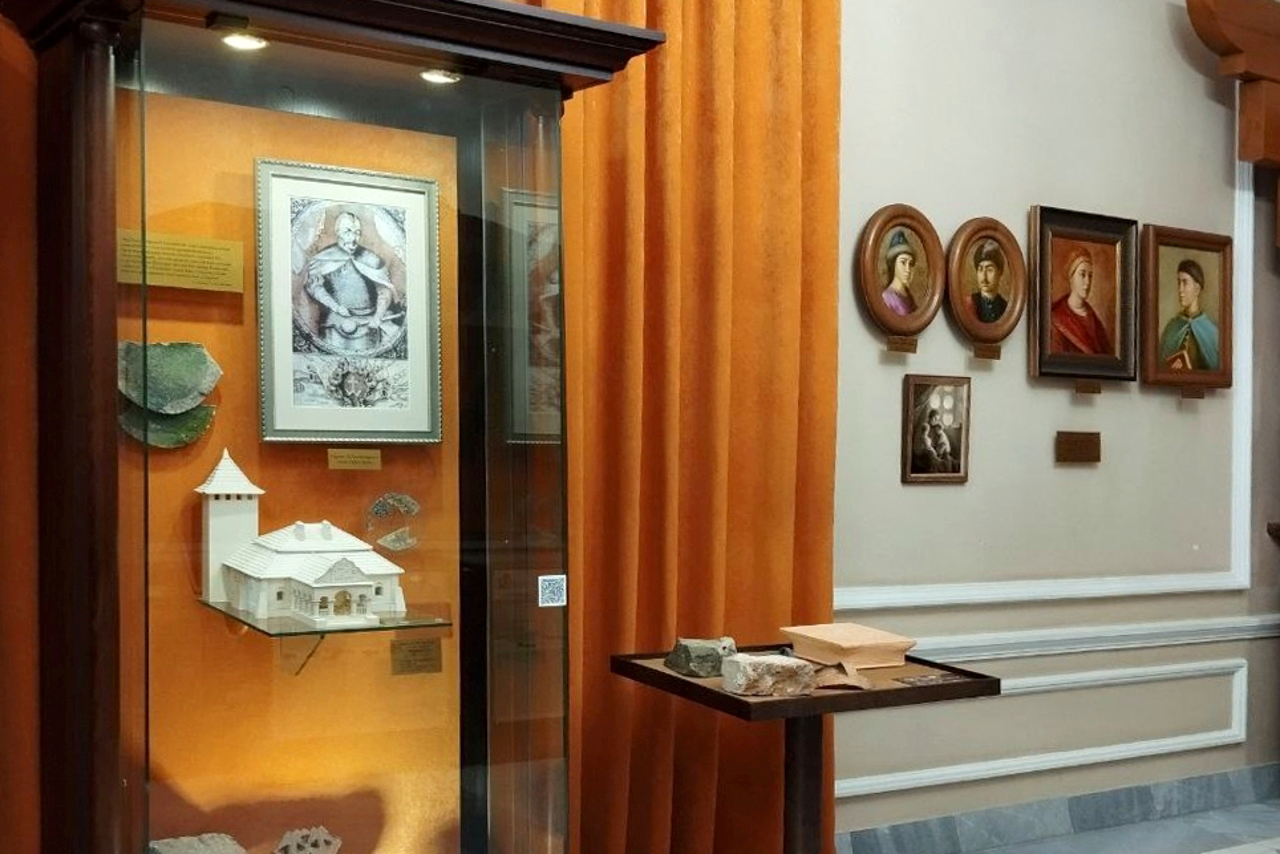All visitors to the Bohdan Khmelnytsky Museum now have access to tactile exhibits with information in Braille and audio guides, as well as inclusive sensory kiosks and a virtual "Mirror of Time".
The Bohdan Khmelnytsky Museum in Chyhyryn presented an updated exhibition, designed taking into account some accessibility standards. The project "Accessible History. Creating an inclusive and educational space in the exhibition of the Bohdan Khmelnytsky Museum" was implemented with the support of the Ukrainian Cultural Fund, the administration of the National Historical and Cultural Reserve "Chyhyryn" reported.
The exposition is complemented by five tactile locations, which present a 3D model of the Church of St. Elijah from Subotov, a tactile painting "Portrait of Bohdan Khmelnytsky", copies of museum objects (pistol, Cossack pipe, drymba, coins) and partly artifacts (fragments of ceramics, metal products of the 17th–18th centuries) that do not belong to the museum collection.
"Visitors can hold them in their hands, feel the texture, inhale the aroma of healing herbs that were added to smoking mixtures, listen to the sound of an ancient musical instrument - drymba. This is especially important for blind and visually impaired people. And in general, all museum visitors are also interested in touching history with their own hands," the reserve notes.
All tactile installations are accompanied by information signs (enlarged Cyrillic and Braille) and audio description via QR code. The exhibition is also complemented by two inclusive sensory kiosks that contain information about the military art of the Cossacks, clothing and equipment.
Another new section of the museum is the virtual "Mirror of Time" using AR (augmented reality) technology.
"Visitors will be able to get acquainted with the elements of Cossack clothing in an exciting way, "trying on" virtual costumes of residents of Chyhyryn of the 17th century. It is important that when creating their models, real archaeological finds were used, which are exhibited in the Bohdan Khmelnytsky Museum - unique remains of women's and men's clothing of the 17th century, found in Chyhyryn," the authors of the project said.
The administration calls the implemented project another step towards creating a barrier-free environment in the Bohdan Khmelnytskyi Museum, combining cultural heritage, history, modern technologies and an inclusive approach.
Photo: facebook.com/nikzchygyryn
Музей Богдана Хмельницького в Чигирині презентував оновлену експозицію, що розроблена з урахуванням деяких норм безбар'єрності. Проєкт "Доступна історія. Створення інклюзивно-освітнього простору в експозиції музею Богдана Хмельницького" реалізувано за підтримки Українського культурного фонду, повідомили в адміністрації Нацонального історико-культурного заповідника "Чигирин".
Експозиція доповнена п’ятьма тактильними локаціями, де представлено 3D-модель церкви Святого Іллі з Суботова, тактильну картину "Портрет Богдана Хмельницького", копії музейних предметів (пістоль, козацька люлька, дримба, монети) та частково артефакти (фрагменти кераміки, металевих виробів XVII–XVIII століть), які не належать до музейної збірки.
"Відвідувачі можуть потримати їх в руках, відчути фактуру, вдихнути аромат цілющих трав, що додавали до сумішей для паління, послухати звучання давнього музичного інструмента – дримби. Це є особливо важливим для людей незрячих та з порушенням зору. Та й загалом всім відвідувачам музею теж цікаво торкнутися історії власноруч", – відзначають у заповіднику.
Усі тактильні інсталяції супроводжуються інформаційними табличками (збільшеною кирилицею та шрифтом Брайля) та аудіодискрипцією через QR-код. Експозицію доповнено й двома інклюзивними сенсорними кіосками, які містять інформацію про військове мистецтво козаків, одяг та спорядження.
Ще одним новим розділом музею стало віртуальне "Дзеркало часу" з використанням технології АR (доповненої реальності).
"Відвідувачі зможуть у захопливий спосіб ознайомитися з елементами козацького одягу, "приміряючи" на себе віртуальні костюми жителів Чигирина XVII століття. Важливо, що при створенні їх моделей були використані реальні археологічні знахідки, які експонуються в музеї Богдана Хмельницького, – унікальні рештки жіночого та чоловічого одягу XVII століття, знайдені в Чигирині", – розповіли автори проєкту.
В адміністрації називають реалізований проєкт ще одним кроком до створення в музеї Богдана Хмельницького безбар’єрного середовища, що поєднує в собі культурну спадщину, історію, сучасні технології та інклюзивний підхід.
Фото: facebook.com/nikzchygyryn



